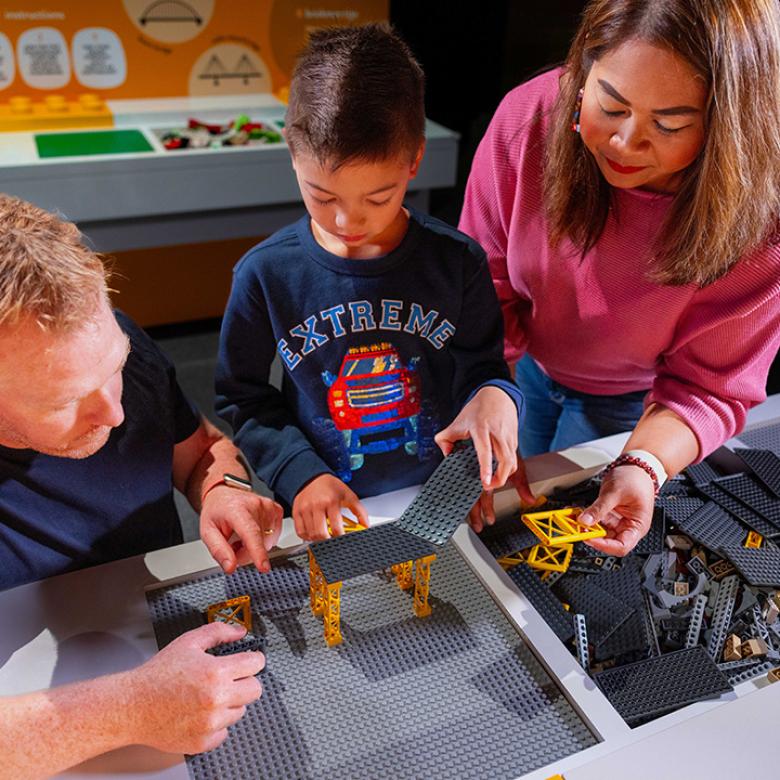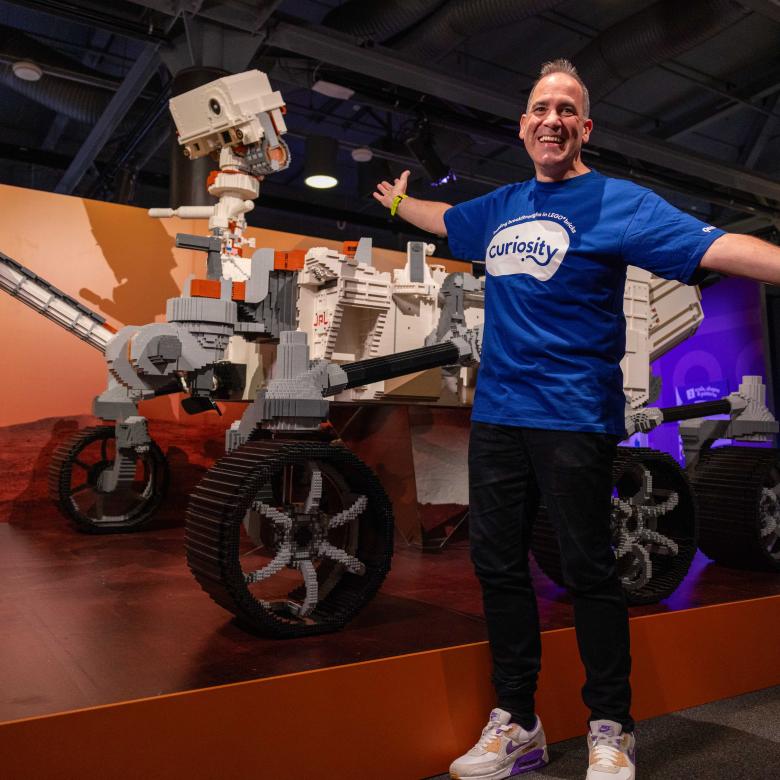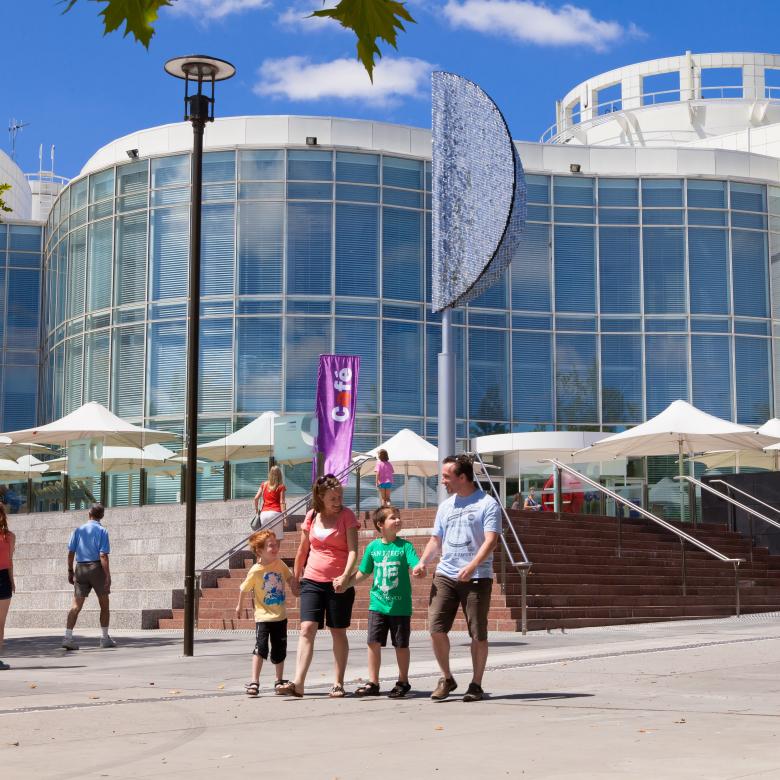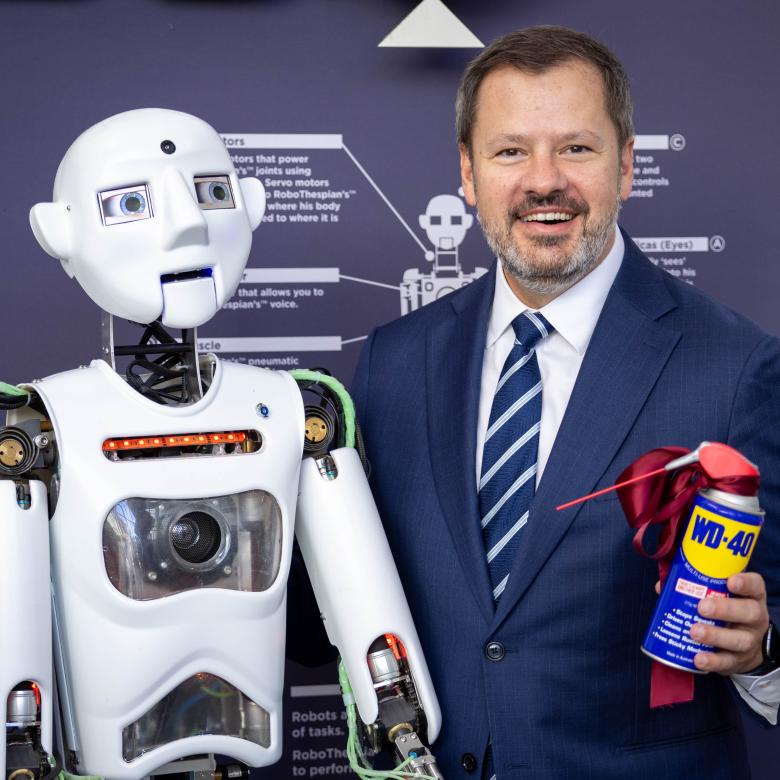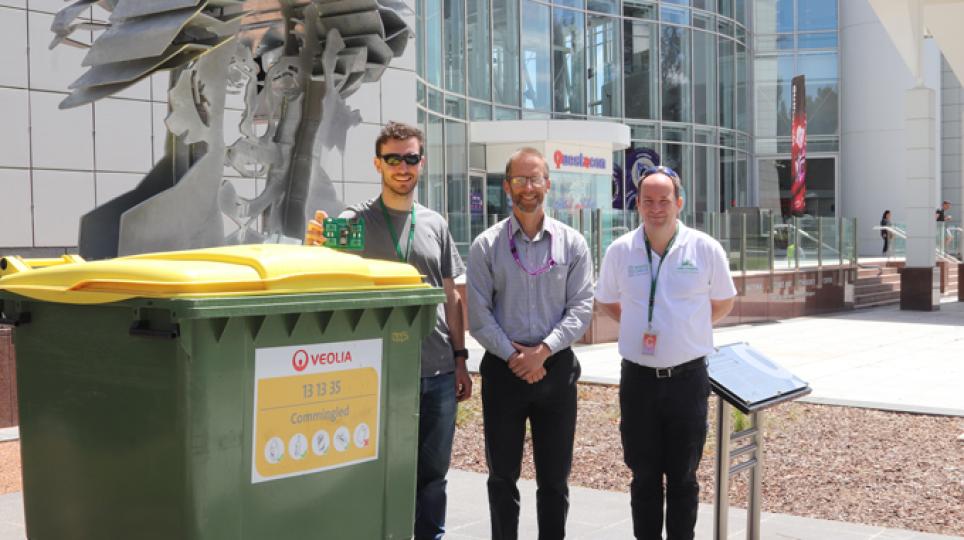 Questacon’s goal to achieve net zero emissions by 2030 is being supported not just by action, but by engaging visitors in the science and innovation behind those actions.
Questacon’s goal to achieve net zero emissions by 2030 is being supported not just by action, but by engaging visitors in the science and innovation behind those actions.
Questacon’s sustainability and crisis manager, Matthew Riches, sees a clear link between environmental action and the Questacon vision: building a better future by engaging Australians in science, technology and innovation.
For years, Questacon has been communicating the science of our Earth, climate change and energy through exhibits such as Climate Stripes and Changing Planet, and through shows such as Your Energy. At the same time, it is putting theory into action, with a commitment to achieving net zero emissions by 2030. After calculating its carbon footprint, Questacon made an initial plan to bring down emissions in the short term.
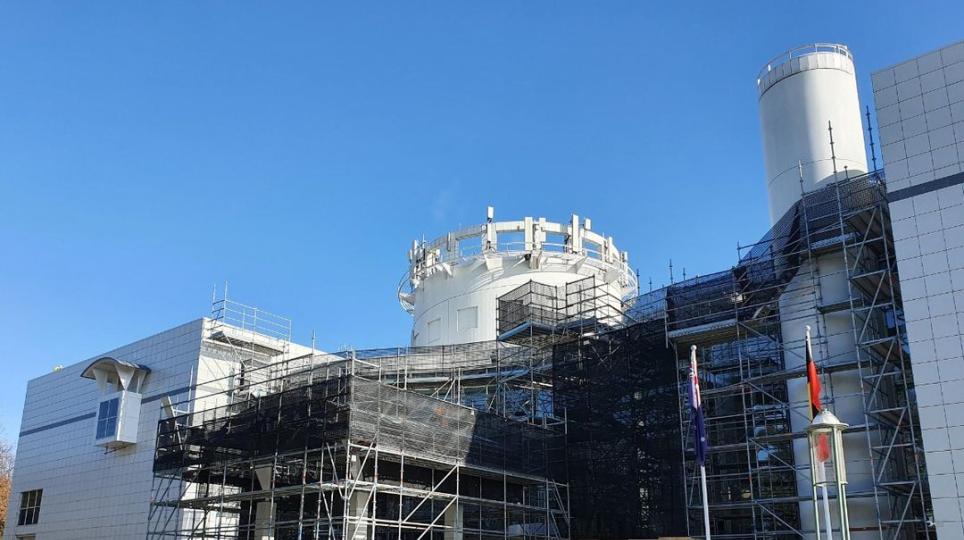 It's a process that certainly has its challenges, as Matthew explains. “In such a large building, maintaining a comfortable temperature consumes a lot of energy, but incremental changes are making a difference.” For example, a review of the glass in the expansive main foyer revealed that three-quarters of the panels had failed, allowing a lot of cold (and hot) air into the building. As a result, the panels were replaced with higher-performing glass, and insulation was added to the frames. These changes are expected to improve energy efficiency while enhancing visitor comfort.
It's a process that certainly has its challenges, as Matthew explains. “In such a large building, maintaining a comfortable temperature consumes a lot of energy, but incremental changes are making a difference.” For example, a review of the glass in the expansive main foyer revealed that three-quarters of the panels had failed, allowing a lot of cold (and hot) air into the building. As a result, the panels were replaced with higher-performing glass, and insulation was added to the frames. These changes are expected to improve energy efficiency while enhancing visitor comfort. 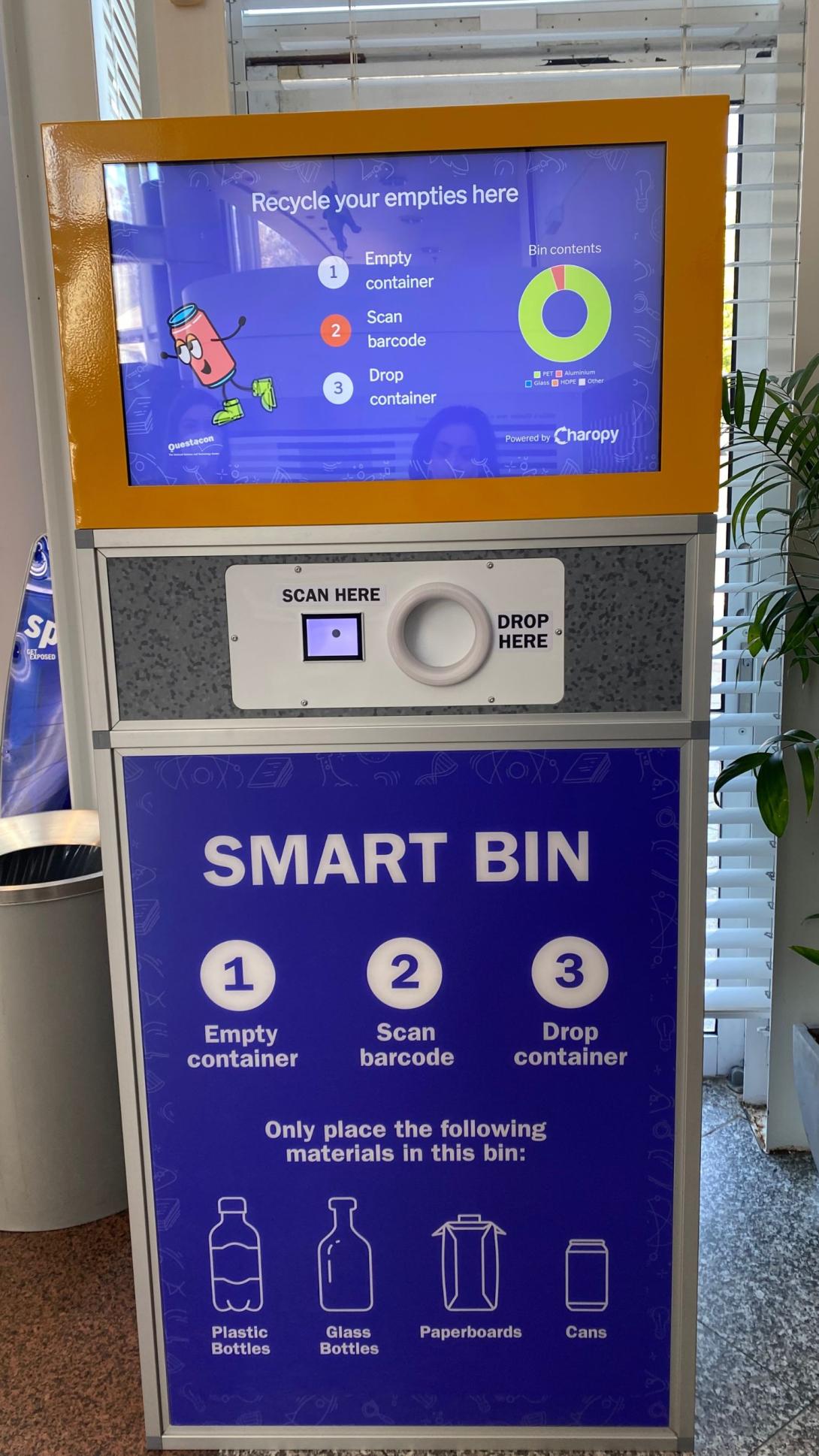
Similarly, when the building’s zinc roof was damaged in a severe hailstorm, Questacon decided to replace it with steel and solar panels. As well as boosting its energy-generating capacity by around 50%, this decision made good financial sense: the resulting energy savings mean the new set-up should pay for itself within a decade.
Questacon has a unique capacity to bring together action and education to amplify the impact of sustainability initiatives. Questacon’s Container Deposit Scheme bin, for example, integrates science communication into the recycling process. To deposit bottles into the bin – which is itself made of recycled material – visitors must first scan the bottle’s barcode. This sorts the bottle into the right recycling bin, while a digital display gives the visitor information about how the bottle will be recycled. This process results in both a clean waste stream and greater awareness around recycling and waste.
Matthew says Questacon has no shortage of staff who know about sustainability issues and want to do the right thing for the environment. As a result, Questacon is looking for ways to more deeply embed the sustainability mindset, build environmental considerations into its systems and processes, and give staff the guidance they need to put sustainability into practice every day.
Matthew explains how Questacon’s travelling exhibition program captures this mindset. “A few years ago, the travelling exhibitions team started using exhibits that were sitting idle in storage. Exhibits were dismantled and rebuilt into new experiences, and some exhibitions were broken down into smaller modular offerings. This extended the life of the exhibits because they could be sent to regional venues that were not big enough to host a large Questacon exhibition.”
This whole-of-life perspective is helping to embrace sustainability thinking from the earliest stages of development.
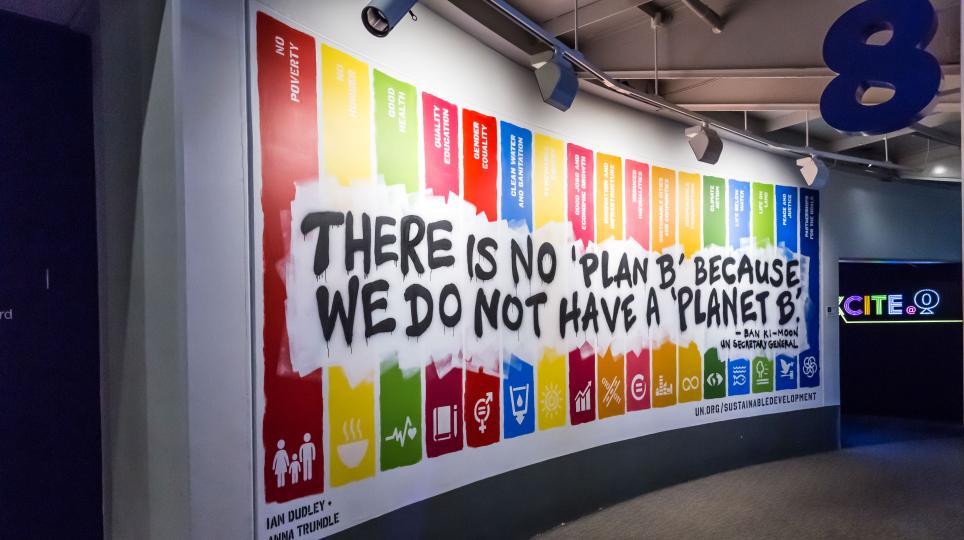 It’s this kind of long-term thinking that Questacon will be building on next year with its Sustainability Action Plan. Since 2017, Questacon has been promoting its commitment to the United Nations Sustainable Development Goals (SDGs): a set of 17 interconnected goals addressing global challenges. To put more structure around that commitment, Questacon will be mapping its activities against the SDG targets and developing a plan to monitor and measure its progress.
It’s this kind of long-term thinking that Questacon will be building on next year with its Sustainability Action Plan. Since 2017, Questacon has been promoting its commitment to the United Nations Sustainable Development Goals (SDGs): a set of 17 interconnected goals addressing global challenges. To put more structure around that commitment, Questacon will be mapping its activities against the SDG targets and developing a plan to monitor and measure its progress.
Questacon’s environmental policy sets out how Questacon will manage energy, water and waste to comply with the law and contribute to achieving the SDGs.


